Have you ever had that sinking feeling in your gut before logging into work? The Sunday scaries turn into a week-long dread, and suddenly, your energy is drained before you’ve even started the day. If this sounds familiar, you might be in a toxic work environment—and the sooner you recognize it, the better.
Toxic workplaces don’t always announce themselves with flashing red warning signs. Sometimes, the dysfunction creeps in slowly, disguised as “high expectations” or a “fast-paced culture.” By the time you fully realize what’s happening, the damage—mentally, emotionally, and even physically—might already be taking its toll.
I worked in a toxic work environment years ago, and after escaping and working through therapy, I have found healing. The lessons I learned on my journey through research and my own lived experience of healing have given me insights into how to spot the red flags.
I didn’t see the red flags when I was being recruited nor in my job interviews. In my onboarding I had that “something’s not right” moment here and there, but my betrayal blindness and reaction to cognitive dissonance led me to keep hoping for the best. I detail that experience in the first episode of the “Our Story” series on my podcast A World of Difference in episode 100, “The Calm Before the Storm.”
No one sets out to work in a toxic work environment where they will struggle to survive. Most founders and CEOs don’t have a goal of building a toxic work culture per se, but toxic cultures can creep in with toxic rockstars, authoritarian leaders who haven’t done their own therapy for childhood trauma or a myriad of other ways people bring their toxic behaviors into the workplace.
So, how do you spot a toxic work environment before it consumes you? Here are the biggest red flags to watch for.
How to Spot a Toxic Work Environment Before It’s Too Late
🚨 1. Leadership Operates on Fear and Control
Toxic workplaces thrive on fear-based management. If leadership constantly uses threats, public shaming, or excessive micromanagement, it’s a sign of deeper dysfunction.
🔴 Red Flags:
- Your boss shames employees in meetings.
- Decisions are made based on who’s most feared, not who’s most competent.
- You feel anxious every time you see a Slack or Teams notification from your manager.
✅ Healthy Alternative: Leadership that prioritizes psychological safety fosters an environment where employees feel secure enough to take risks, share ideas, and admit mistakes without fear of punishment.
🧨 2. High Turnover and “Survivor” Culture
If people are constantly quitting, getting fired, or mysteriously “disappearing”, you might be in a toxic environment. High turnover usually signals burnout, bad management, or deep-rooted issues that leadership refuses to address.
🔴 Red Flags:
- You realize you’re the tenth person to hold your role in two years.
- There’s a whisper network of former employees with horror stories.
- Leadership dismisses turnover with “They just weren’t a culture fit.”
✅ Healthy Alternative: Organizations that value retention invest in employee well-being, professional development, and transparent leadership.
⛓️ 3. Overwork Is Worn as a Badge of Honor
In a toxic workplace, grind culture is glorified. People brag about pulling all-nighters, skipping vacations, and burning the candle at both ends—while leadership conveniently avoids the same sacrifices.
🔴 Red Flags:
- You’re expected to be on call 24/7—even if it’s not in your contract.
- Burnout is ignored or celebrated, with phrases like “That’s just how it is here.”
- Taking PTO is met with guilt-tripping or subtle punishment.
✅ Healthy Alternative: A company that values work-life balance sets clear boundaries around working hours and encourages employees to rest and recharge.
🎭 4. Inclusion Is Just a Buzzword (or Nonexistent)
Diversity, equity, and inclusion aren’t just corporate checkboxes—they’re the foundation of a thriving workplace. If your company claims to support DEI but doesn’t actually create an inclusive environment, that’s a problem. We are seeing the US government and corporations exit these programs this week with layoffs by the US President and by the broligarchy in certain Silicon Valley companies eliminating these positions as irrelevant. If they are irrelevant, that is it’s own red flag, and will not be good for business long-term. Bringing in different perspectives is a risk management practice to eliminate groupthink which is very, very bad for business.
🔴 Red Flags:
- Leadership lacks diversity but insists “We hire the best person for the job.”
- Microaggressions and discrimination go unaddressed.
- DEI initiatives exist only in PowerPoint presentations, not real change.
✅ Healthy Alternative: A truly inclusive workplace prioritizes diverse hiring of qualified talent (seeing women for their potential and not just their experience), promotes equitable growth opportunities, and fosters an environment where all voices are heard.
🕵️♀️ 5. Transparency Is Replaced with Secrecy and Gossip
In a toxic workplace, nobody knows what’s really going on. Decisions happen behind closed doors, and employees are left guessing about the future of their roles or the company.
🔴 Red Flags:
- Leadership withholds important company updates.
- Promotions and raises happen in shady, unexplained ways with favoritism.
- A culture of gossip and backchanneling replaces open communication.
✅ Healthy Alternative: Companies with transparent communication keep employees in the loop, trust their people, and encourage open dialogue without fear of retaliation.
So, What Can You Do?
If you recognize these red flags in your own workplace, you have options:
✅ Document everything. Keep records of toxic behavior, especially if it escalates.
✅ Set boundaries. Protect your well-being and resist being guilted into overwork.
✅ Start exploring your exit strategy. No job is worth sacrificing your mental health.
✅ Seek support. Whether it’s HR (if they’re trustworthy), a mentor, or a professional network, don’t navigate toxicity alone.
🚪 And remember: You are not stuck. If your workplace is harming you, there is a way out—and a healthier, thriving career on the other side.
💬 Have you experienced a toxic work environment? What red flags did you notice first? Drop a comment—I’d love to hear your insights!
🔔 Subscribe for more leadership, workplace culture, and career insights delivered straight to your inbox.








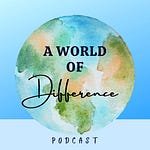

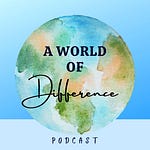
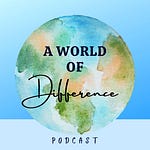
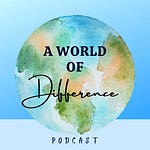

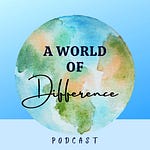
Share this post